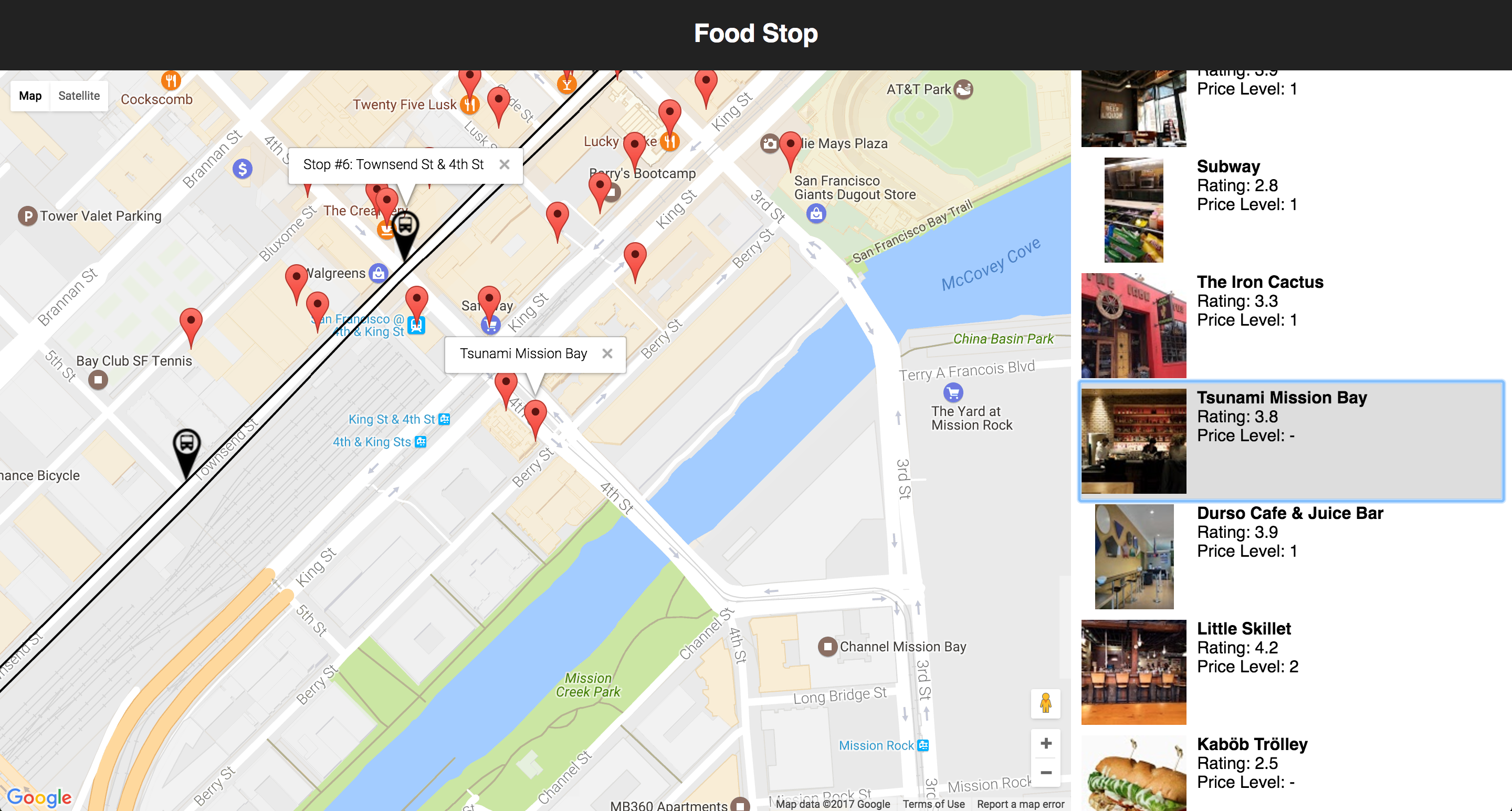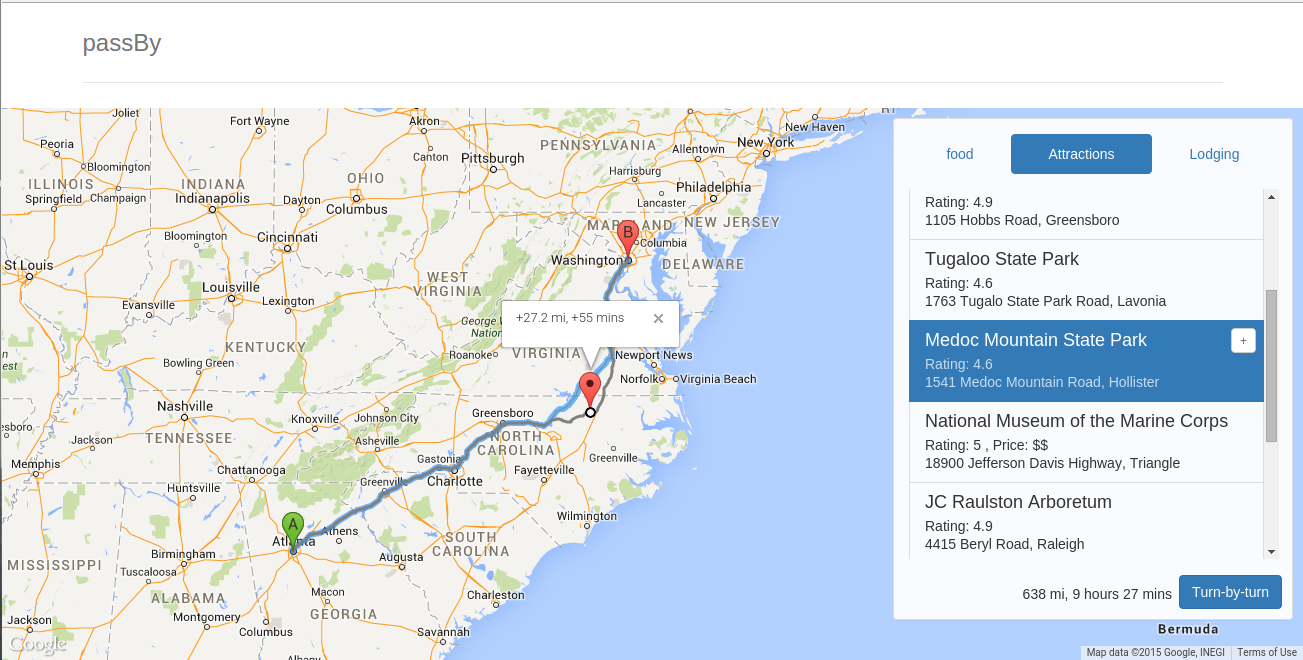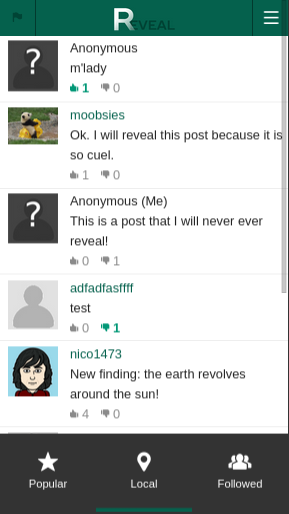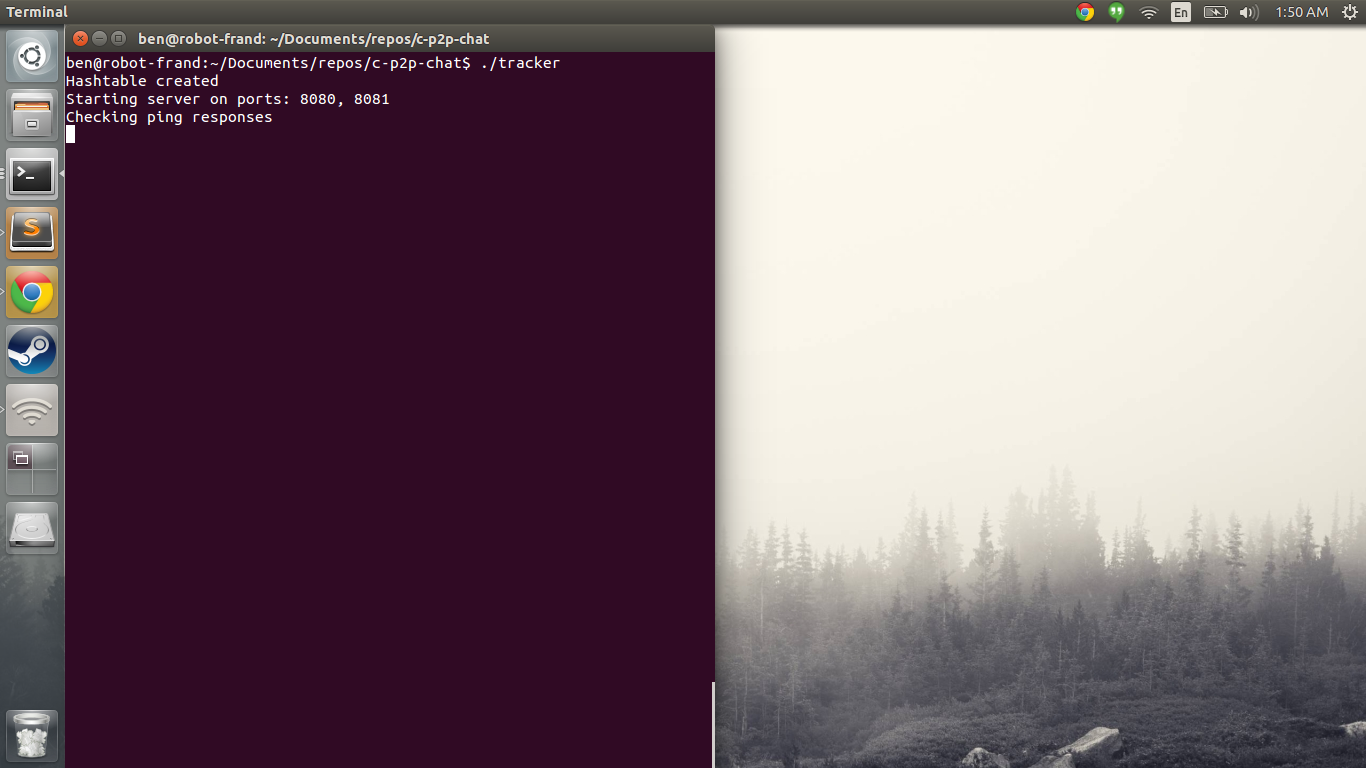Here are some projects I enjoyed making.
Food Stop
Food Stop is similar to passBy (listed below), but the use case is narrower and uses ReactJS. With Food Stop, the user is able to select a bus route using the NextBus API. Then, it will search for restaurants near each bus stop.
Note, the NextBus api only supports http, so for now, the app only works when accessed through http.
passBy
This is my first AngularJS app. It essentially lets you input a route into Google Maps, and then, it searches along that route for highly rated Google Places. Finally, your route is shown with the highly rated results, and you can asynchronously add these results to your route.
This was primarily just a proof of concept. Google Places limited me to 10 searches at a time, so the results can be hit or miss.
Reveal
Reveal is an app I created as a spin-off recently trending anonymous (gps based) social media apps. It allows users to create a post anonymously, and other people in the general area can rate the post. The twist is the original poster can reveal that he/she was the one that made the post.
There are some technical details worth mentioning. This app is comprised of two parts. A Rails back-end that serves as a RESTful API, and a front-end Rails mobile web app. Some notable features I learned to implement were: one way hashing of passwords, image uploading for profile pics, and notification polling.
Tour de CB
While working at Career Builder (CB), in my spare time, I created this web app that allows people with desk cycles to race one another in Google Street View.
A coworker handled the interface (a Raspberry Pi measuring the cycle's resistance via AUX cable) for sending POST requests with the estimated distance of the cycle. My app would then move the racer by that distance on a predetermined route (no steering needed).
Overall, the web app is very similar to an online video game. There are multiple user created lobbies, and these lobbies have a cyclical flow: pre-race, racing, and post-race. When you join a lobby, everything is updated in real time via websockets. Racers move as markers in street view and on a normal map. Additionally, you can chat (a nicer way of saying talk trash) with the other racers. Lastly, users have stats that are shown and/or charted at the end of the race and on their profile.
This Rails web app was a lot of fun to work on, but also, it was a very good way to learn how to use websockets.
c-p2p-chat
c-p2p-chat is a peer-to-peer chat program written in C, and you can run it in the terminal. It certainly isn't as flashy as the previous projects, but this lower level programming was no less interesting to me.
This project was a group final project for my Networking I class. We were given complete freedom in how we designed the protocol and implemented it. However, there were very few to no resources explaining any approach, which made it all the more rewarding in the end.




